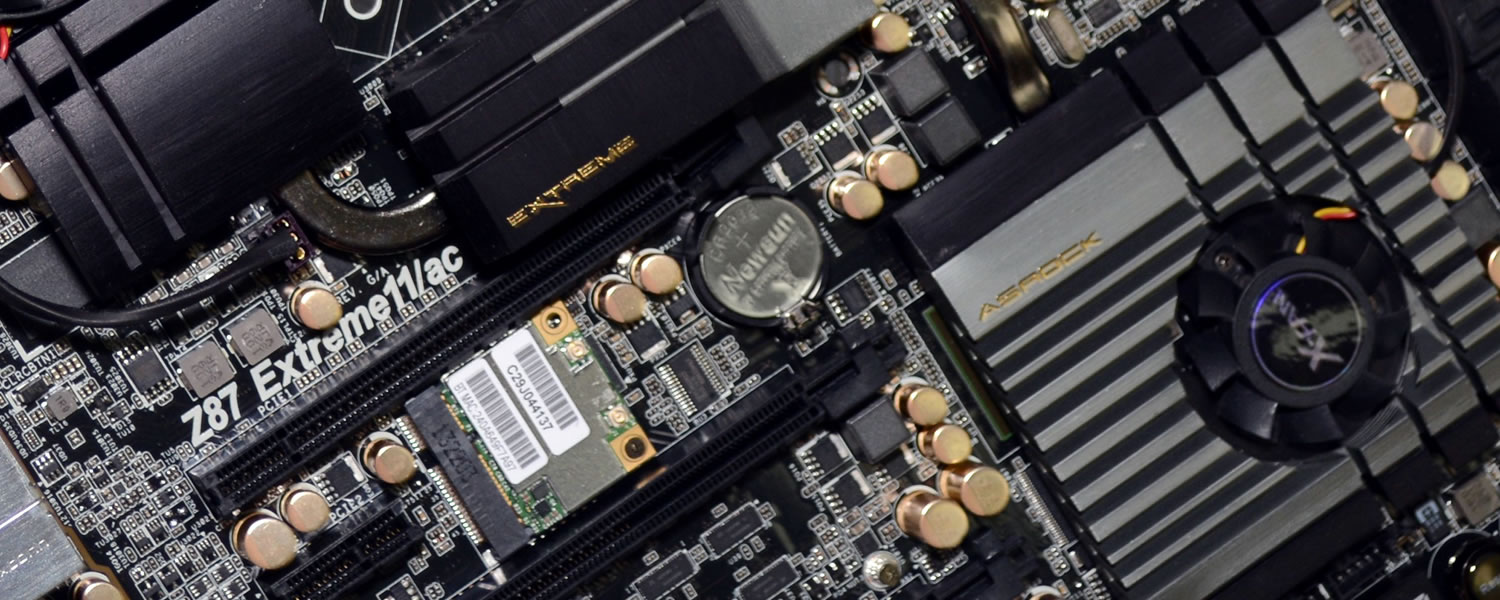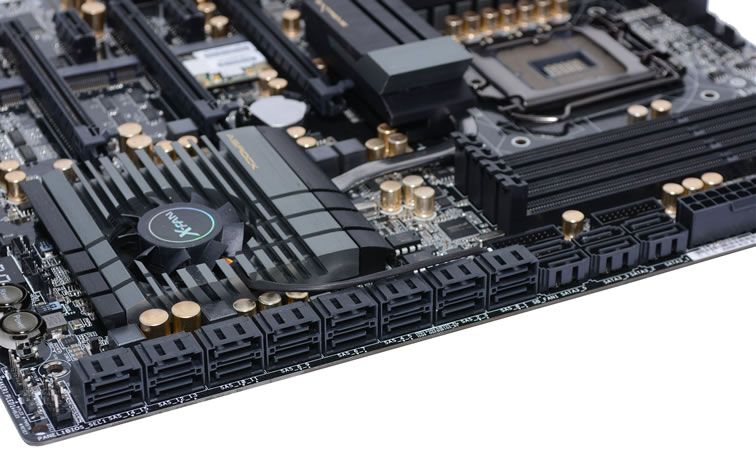Although Asrock's Z87 Extreme9/ac offers all the motherboard we need at $360, we're happy to see companies catering to enthusiasts who will take things further – like $200 further. LGA2011 is known for such solutions, including Asus' $500 P9X79-E WAS or Asrock's own $600 X79 Extreme11. With that platform now a few years old, manufacturers are shifting their focus to LGA1150, which arrived this year alongside Haswell and is accompanied by the Z87 chipset, among other Lynx Point-based parts.
Some of you may question Asrock's platform choice anyway because Intel's most powerful desktop CPU (the Core i7-4960X) started shipping a few months ago on LGA2011. While there's no denying that hexa-core, dozen-threaded processor is an enthusiast's dream, at $1,000 that's precisely where it will remain for most. The chip is grossly overpriced and its aging platform doesn't exactly sweeten the deal. For a third of the cost, most folks are better off with the newer Core i7-4770K and LGA1150.
Sockets aside, Asrock's new Z87 Extreme11/ac may very well be the most extreme motherboard we've handled. It touts four-way GPU support, premium onboard audio that includes a headphone amp, dozens of ports, dual gigabit Ethernet, Wi-Fi, Bluetooth and – unsurprisingly – the largest price tag in its class, which includes the $430 Gigabyte Z87X-UD7, $410 MSI Z87 XPower, $400 Asus Maximus IV Extreme, $400 Gigabyte G1.Sniper 5 and the $370 ECS L337 Gaming GANK Domination Z87H3-AX.
So, how exactly does a company justify $540 for a motherboard?
Z87 Extreme11/ac Key Features
The board's PCI Express configuration seems like as good of a place as any to start and it features an ExpressLane PEX 8747 chip, which is a 48-lane, five-port, PCIe Gen 3 switch. The board has four PCIe x16 slots, though one bypasses the PEX 8747 and lets single-card setups connect directly to the CPU. Meanwhile, 3 and 4-way GPU configurations all receive x8 bandwidth.
In addition to the Z87's six SATA 6Gb/s ports, Asrock has included an additional LSI SAS-3 3008 controller for another eight 12Gb/s ports which are then split and turned into 16 6Gb/s ports using a 3X24R expander.
The LSI SAS-3 3008 PCIe 3.0 controller provides eight SAS2/SATA3 6Gb/s ports supporting RAID (RAID 0, RAID 1, RAID 1E and RAID 10), NCQ and "Hot Plug" functions. With the port multiplier, it can support up to 10 hard drives in a single RAID array.
Asrock has devised a seriously impressive solution and it makes the Z87 Extreme11/ac the most advanced desktop motherboard we have ever seen in terms of storage capabilities. Accompanying its staggering 22 onboard SATA ports is an eSATA port on the board's I/O panel as well as two onboard mSATA slots.
The eSATA port on the I/O panel is supplied by the Z87 and is shared with the fifth onboard SATA port. In other words, if the eSATA port on the rear I/O has been connected, the fifth onboard SATA port won't work. This eSATA port supports NCQ, AHCI and Hot Plug while the cable length cannot exceed one meter.
For audio, the Z87 Extreme11/ac is equipped with the ALC1150 codec, Realtek's premier offering. Complete with content protection, premium Blu-ray audio and DTS support it's about as good as onboard audio gets.
Realtek's chip is accompanied by Asrock's Purity Sound technology, which incorporates a headphone amplifier, a 115dB SNR DAC with a differential amplifier, Direct Drive technology, EMI shielding cover and PCB isolated shielding.
Much like the SATA situation, we find an abundance of USB 3.0 ports on the Z87 Extreme11/ac and again they are split from a smaller source. However, unlike the SATA ports which are split from a high bandwidth device the USB 3.0 ports are split from their original 5Gb/s bandwidth.
The Z87 provides six USB 3.0 5Gb/s ports and using the ASMedia ASM1074 4-port hub Asrock has added another four ports to the board's I/O panel. That works out to six USB 3.0 ports on the I/O panel but only two are directly linked to the chipset.
Another two USB 3.0 headers onboard would typically support four more ports but using Asrock's included Wi-SD Box it's possible to support six USB 3.0 ports via these headers.
The Wi-SD Box comes with two invisible antennas (placed in a vertical/horizontal position), hidden inside the front panel designed to provide stable and unrestricted-direction wireless network coverage. Additionally, it provides four front USB 3.0 ports for easier USB 3.0 device access, an SD card slot and enough room for a single 2.5" device such as an SSD.
The 802.11ac Wi-Fi solution supports IEEE 802.11a/b/g/n/ac, dual-band (2.4/5 GHz) and high speed wireless connections up to 867Mbps. Bluetooth 4.0 / 3.0 + HS Class II is also supported.
For wired networking, Asrock has included Intel's I217V PHY and I211AT controllers, which support Wake-On-LAN, Energy Efficient Ethernet 802.3az and PXE while the I217V offers Intel Remote Wake Technology. Together, the pair can also be used for teaming.
Topping off the connectivity are a pair of second-gen Thunderbolt ports which support bandwidths up to 20Gbps for up to a dozen devices when daisy chained. Additionally, you can also connect a graphics card to Asrock's exclusive DisplayPort-In socket on the motherboard using a mini-DP to DP cable. This lets you link Thunderbolt devices and monitors using a Thunderbolt cable.







